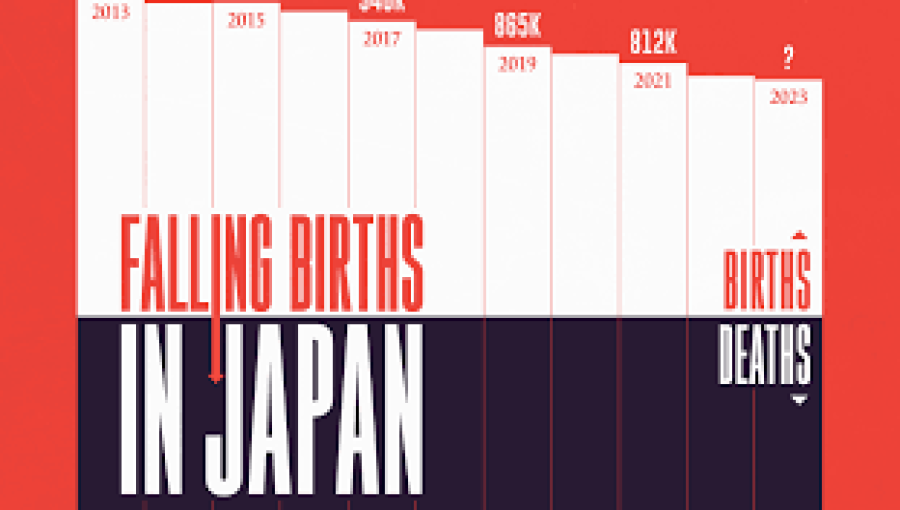The number of babies born in Japan during the first quarter of 2024 fell to 170,804, marking a significant decrease from the same period last year, according to government data released on Friday. This represents a decline of 11,673 births, or 6.4 percent, from January to March of 2023, based on a preliminary report from the health ministry.
The declining birth rate is a continuing trend in Japan, which faces a demographic crisis characterized by an aging population and a shrinking workforce. The latest data underscores the ongoing challenge, with the number of deaths surpassing births by 270,566 during the same reporting period, a 0.5 percent increase in the death rate.
In contrast to the declining birth rate, the number of marriages in Japan has seen a slight uptick. In the first quarter of 2024, marriages increased by 1.3 percent, totaling 136,653. This increase in marriages, however, has not yet translated into a corresponding rise in birth rates, indicating that other factors may be influencing the decision to have children.
The preliminary health ministry report highlights the urgent need for policies that can effectively address the low birth rate. Japan has been implementing various measures to encourage families to have more children, including financial incentives, improved childcare services, and efforts to create a more favorable work-life balance. However, these measures have so far had limited success in reversing the trend.
The demographic trends reflected in the latest data have significant implications for Japan's future economic and social stability. The shrinking population could lead to a labor shortage, increased pressure on the social security system, and a decline in overall economic productivity.
As the government continues to seek solutions to these demographic challenges, the latest statistics serve as a stark reminder of the urgency of the situation. Addressing the root causes of the declining birth rate, such as economic insecurity, work culture, and gender inequality, will be crucial in shaping Japan's demographic and economic future.
END/V7N/SMA/DK/































Comment: